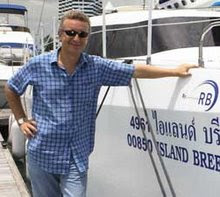
I have not been updating the blog lately as I have been wrapped up in yet another rapid expansion of my yard. The latest has been precipitated by a large order from the Middle East for a series of vessels – the first stage of the mould for the first of which, a Samawy 44, is pictured above – as well as other new custom orders, including another Wharram Tiki 38 sailing catamaran, below, in red cedar composite strip-plank for a New Zealand owner.
I am having to build a new yard in Jomtien, as well as expand my existing facilities. Necessarily, I am also wanting to employ additional management staff, particularly younger boat-builders and engineers who have the experience to supervise a series of projects at the same time (if you're interested, please don't hesitate to emal me!).
In between all this half a dozen vessels are nearing their launch dates, especially at the Jomtien yard. But more on these soon!
I am having to build a new yard in Jomtien, as well as expand my existing facilities. Necessarily, I am also wanting to employ additional management staff, particularly younger boat-builders and engineers who have the experience to supervise a series of projects at the same time (if you're interested, please don't hesitate to emal me!).
In between all this half a dozen vessels are nearing their launch dates, especially at the Jomtien yard. But more on these soon!




























_of_s9s.jpg)
_of_Sailing_trip_114.jpg)
